Scientists study all the ways music can boost health
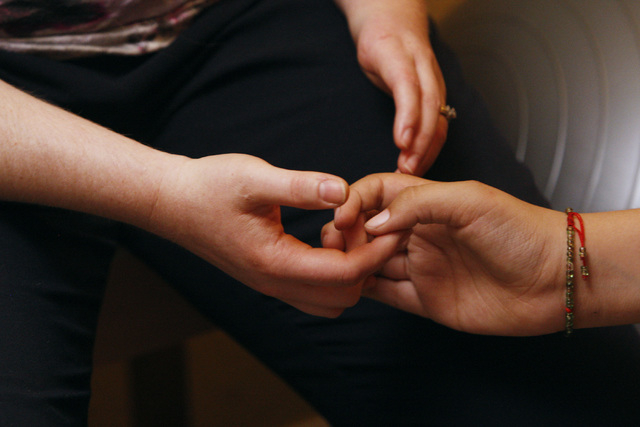
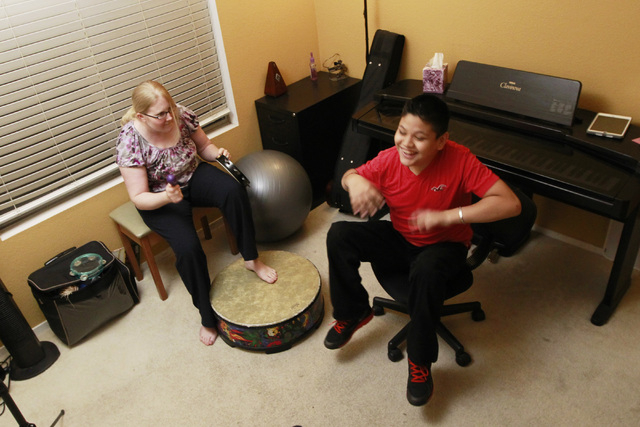

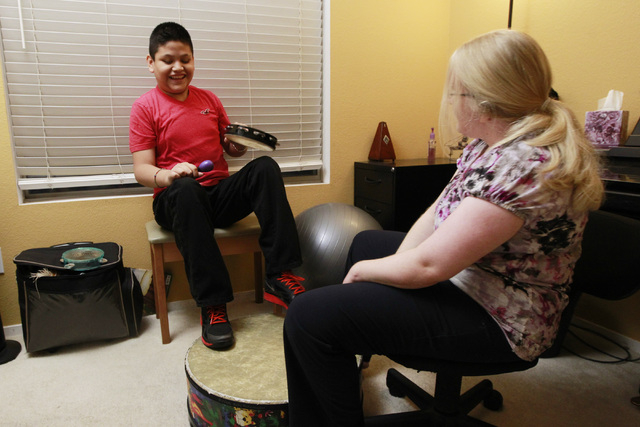
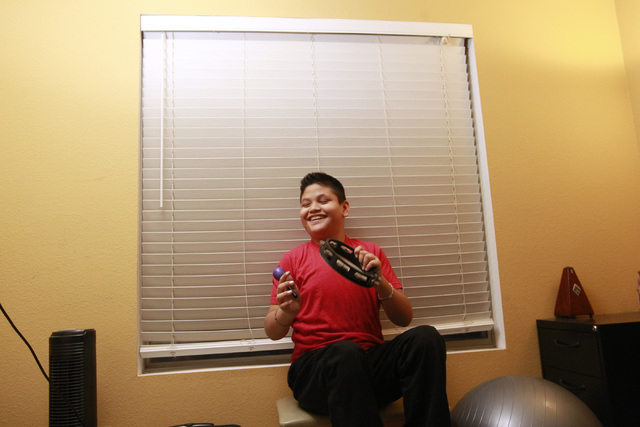
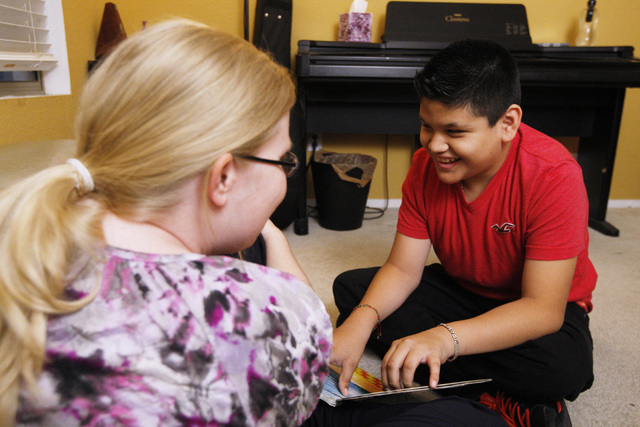

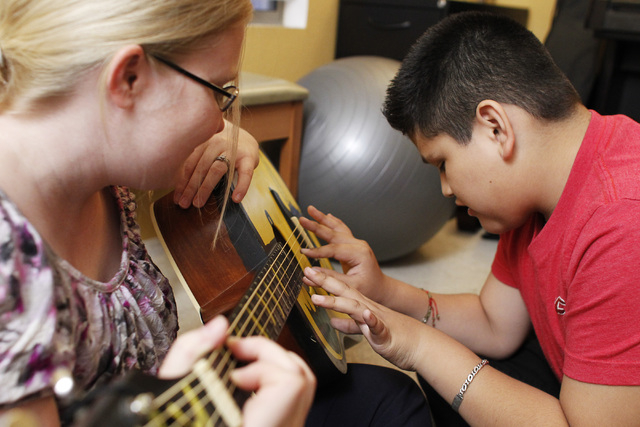
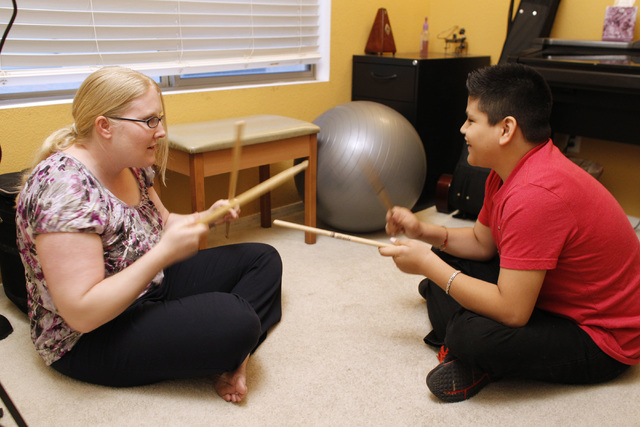
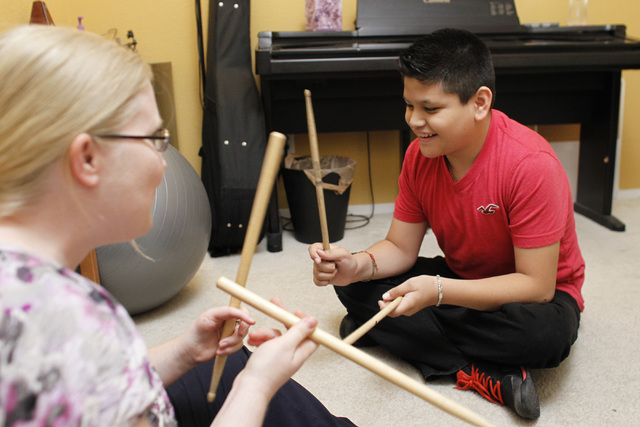
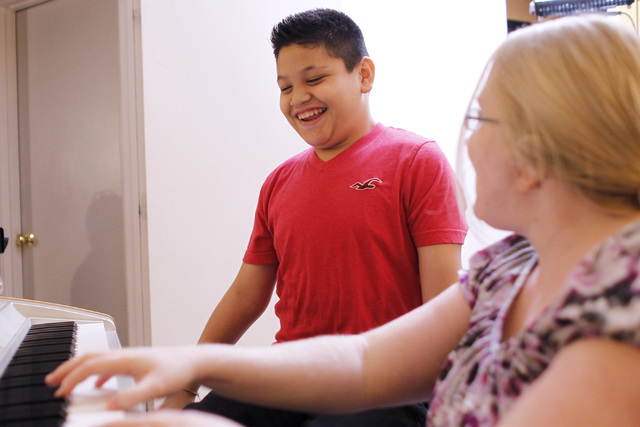
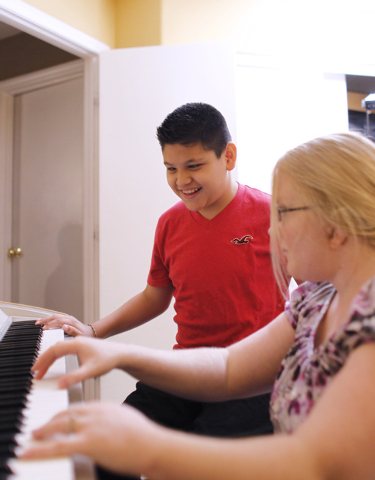
Every week, local musician Terry Lang packs up his acoustic guitar, a collection of jazz and classical sheet music, and heads for a medical office building off North Tenaya Way, in the shadow of MountainView Hospital.
He takes the typically crowded elevator up to the third floor and makes his way to Nathan Adelson Hospice, a quiet suite of offices and hospital rooms with honey-colored wood floors and soft, pale-green chairs.
Depending on the day, the staff may spot Lang and point him toward a particular patient, or he will simply poke his head into the rooms and gently ask family members if they or their loved ones would like to hear him play.
If they say yes, the 62-year-old volunteer will sit in a chair at the end of the hospital bed, his gold, wire-rimmed glasses perched on his nose, and pluck through melodies that quietly skim the room like children’s lullabies.
Ever since Lang started volunteering last year, the nurses have been known to stand in the doorways just to listen. Some patients have been so soothed by his playing that he’s stayed in their room for as long as an hour.
Lisa Browder, the hospice’s complementary-therapies program manager, isn’t surprised.
Hearing is the last sense to fade away at the end of life, she said. Even if patients are unresponsive, more than likely they can still hear what’s going on. And if minds are full of worries and fears that can’t be expressed, music is a way to provide some peace of mind.
“Anxiety can exacerbate all kinds of physical issues that are going on. You bring somebody in and they sit at the end of the bed and they play beautiful, soft classical music for half an hour and the anxiety goes away.
“Sometimes you find that the breathing gets better, they sleep better, it means they don’t need sleeping pills. … If you can have somebody come in and do that, what a blessing,” she said.
The idea that music provides an avenue for healing and solace isn’t new. Somehow, even on the worst of days, the words and timbre of a favorite song can often make the stresses melt away. Even during World Wars I and II, veterans hospitals brought in musicians to play for the soldiers, knowing that it could ease their suffering from the physical wounds and emotional trauma of combat.
But it’s only recently, with the advances in brain research, that science has begun to understand just how far-reaching music’s benefits can be for our physical and emotional health.
Because music is so complex, with our brains processing elements such as pitch, rhythm, key, meter and language all at once, it engages the mind more fully than any other sensory experience, lighting up multiple areas of the brain, said Concetta Tomaino, executive director of the Institute for Music and Neurologic Function in the Bronx, N.Y.
“There’s semantic value to music, there’s sound patterning to music, there’s feeling and associations attached to it, there’s the tone and structure to it,” Tomaino said. “So all of those elements require multiple levels of brain function.”
If you look at some of the newest studies surrounding music and health, it’s like skimming through a glossary of medical specialties. The research is linking specific music protocols to everything from reducing anxiety in hospital patients and increasing immune function, to improving sleep and heart rates for premature babies in intensive care.
There are also the more dramatic medical benefits, some of them getting recent attention in the media.
Music therapy, for example, can spark amazing recuperative abilities in the brain, helping it make reconnections or even circumvent damaged areas and create new pathways, Tomaino said. Singing and rhythm, for example, were used extensively in the treatment of former U.S. Rep. Gabrielle Giffords, D-Ariz., to help her regain the use of language and speech.
A documentary called “Alive Inside,” which won the Audience Award at this year’s Sundance Film Festival, shows patients with Alzheimer’s disease and dementia responding, in some cases quite dramatically, as they listen through headphones to music from their pasts.
The film centers around the work of a nonprofit program called Music &Memory, which trains professionals and caregivers how to use iPods to create playlists for dementia patients so they can “reconnect with the world through music-triggered memories,” according to its website.
Tomaino said music therapists do use autobiographical music to help dementia and Alzheimer’s patients retrieve memories or past associations with those memories.
Although some of the latest findings are grabbing headlines, no less inspiring are the inroads that are being made with music every day.
Emily Rawlings, a local certified music therapist, works with adults and children who have disabilities such as cerebral palsy, blindness, autism and developmental delays. Music, she said, is the tool she uses to address a spectrum of physical and emotional issues.
Recently, she worked with a 19-year-old client with a condition called Arnold-Chiari malformation, an abnormality of the brain that affects issues such as speech and fine motor skills. The 45-minute session included communicating through singing and writing lyrics, using the correct fingers to plunk out patterned notes on the piano, dancing, and moving a “Star Wars”-style light stick while singing rhymes.
All the while, she coaxed out clear word pronunciations and full sentences from her eager student, and encouraged him to move legs and arms as boldly as he could.
Rawlings, who has a bachelor’s degree in music therapy that requires her to be proficient in guitar, piano, percussion and voice, said music often can reach clients in ways other therapies can’t.
She worked with one young girl who had selective mutism, for example, whose anxiety was so pronounced she wouldn’t speak outside the home. Rawlings was able to get her to express herself through dance, art, playing instruments and writing.
Another child was severely developmentally delayed because of a brain disorder called hydrocephalus that prevented her from standing up for more than a few seconds at a time. But because of the girl’s attraction to music, Rawlings was able to coax her into standing next to her at the piano to sing and play music.
“We would stand for five to seven minutes, then she would accomplish more and more, and we would move on to something else. … They’re affected neurologically, emotionally, and because (music) is such a positive, natural experience, it’s something that can draw them in faster and build that relationship of trust,” she said.
Music can be effective in a broader sense, too.
Judith Pinkerton, a certified music therapist and president of the Western Region Chapter of the American Music Therapy Association, has worked with clients in Southern Nevada for several years, specializing in areas such as addiction and mental health. Earlier this year, she gave a talk at the TEDx conference at the University of Nevada, Las Vegas on managing stress through music.
The key, she said, is to use music daily in a balanced way rather than creating playlists that will continually fuel feelings such as depression, anger or anxiety, and to understand that music is affecting health measures such as heart rate and blood pressure.
“There are so many of us that are stuck in these moods and now we know that people instinctively play music where they’re at, they’re pushing play on music that’s unsettled,” said Pinkerton, who is also a classical violinist and founder of Music 4 Life.
“The music industry is complying because this is what people are craving, because there is so much unsettledness in the world right now,” she added.
But the “magnificence” of music, and what science is learning more and more all the time, is that its potential is vast and, in many cases, only beginning to be discovered, she said.
Pacifica Senior Living Green Valley, a Henderson assisted-living facility, will be launching a pilot program this month that furnishes iPods with individualized music playlists to residents as a way to improve their quality of life.
The project stems from the efforts of a national nonprofit organization called Music & Memory, which helps supply iPods and other digital music devices to senior care facilities, as well as training on how to set up the programs.
Pacifica Green Valley will initially include five of its most severely affected dementia residents, and is partnering with University of Nevada, Las Vegas researchers who will be studying the outcomes of the project, said Julie LeGrand, the facility’s memory care director. “We’re really excited to bring some peace to some of our residents who are being controlled by disease. We know that this isn’t a cure, this is another method to help them, bring them back to themselves for a little bit,” LeGrand said.
The music devices, which are fitted with headphones, are downloaded with specific songs or music genres from the “happiest, most vigorous” times of the residents’ lives, said Carol Wilhems, a local Music & Memory volunteer. In other Music & Memory programs around the country, listening to the personalized music has had effects such as improving mood, making residents less withdrawn and diminishing the need for medication, Wilhems said.
Pacifica Green Valley will be the first facility in Nevada to launch a Music & Memory project. Those wishing to donate iPods or other digital music devices that are new or gently used can drop them off at the facility, 2620 Robindale Road in Henderson.
Also, the Las Vegas Interactive Marketing Association is raising funds and collecting digital devices as an effort to bring the program to facilities throughout Southern Nevada. More information is provided on the group’s website, lvima.com.












